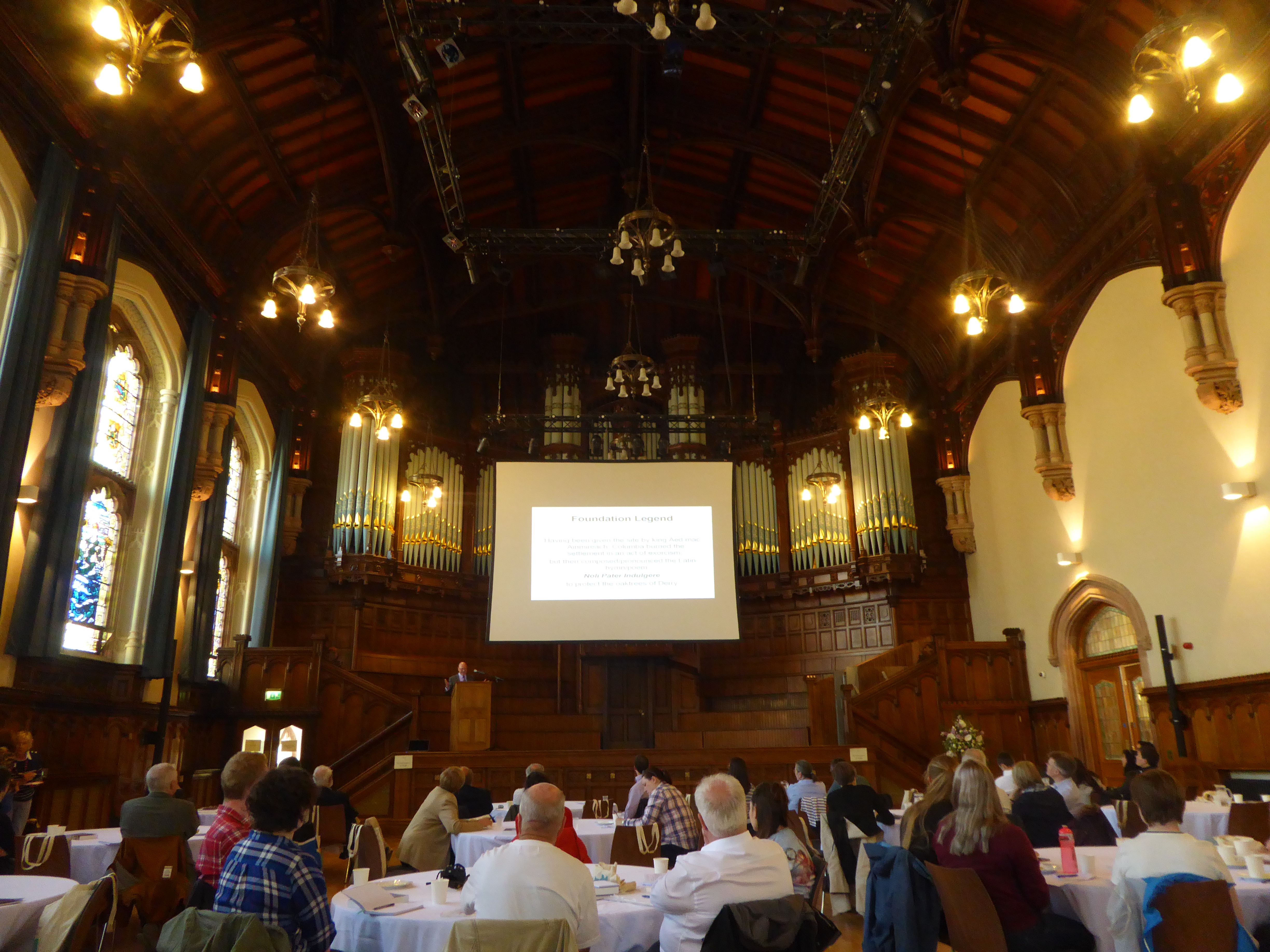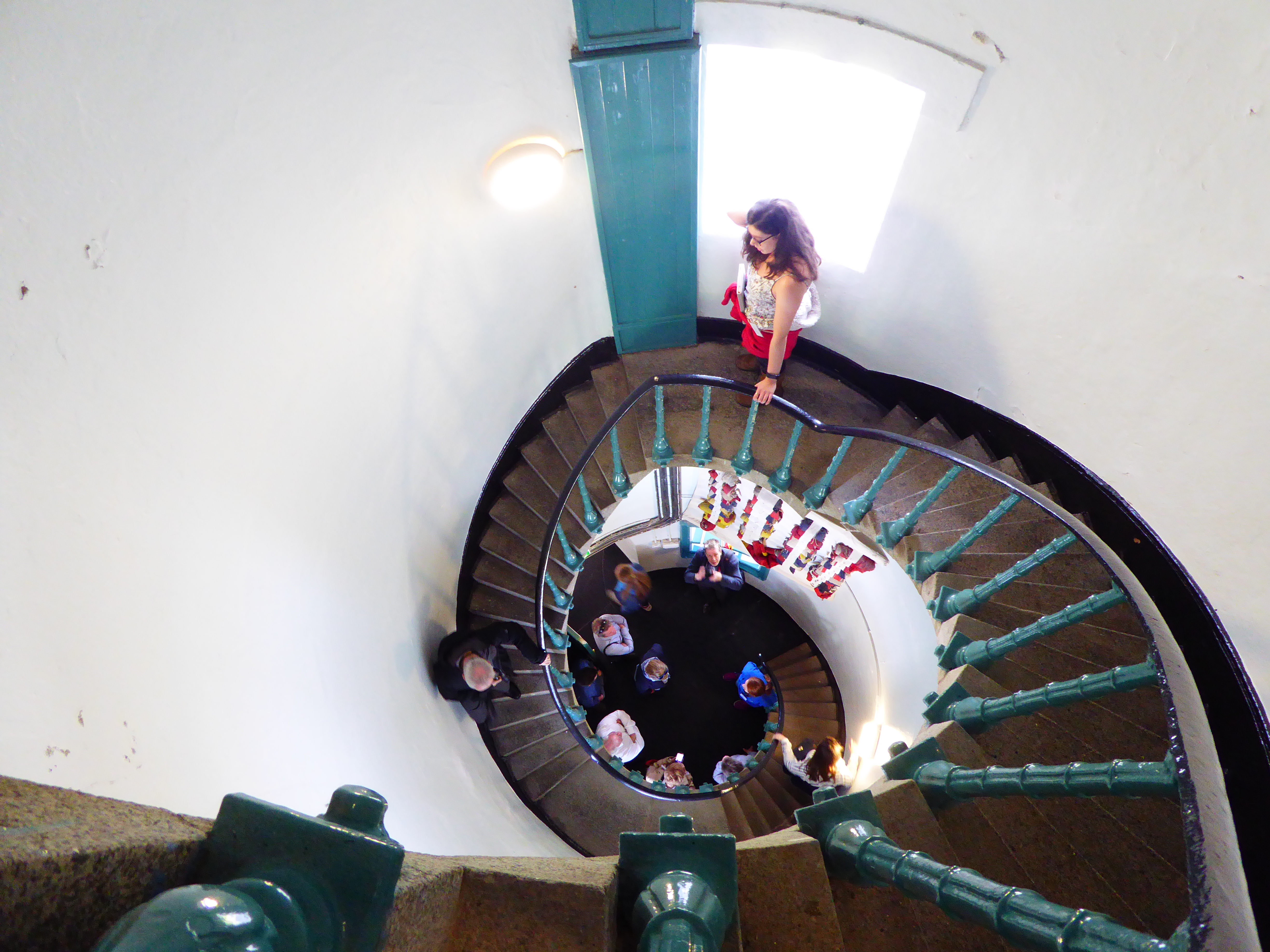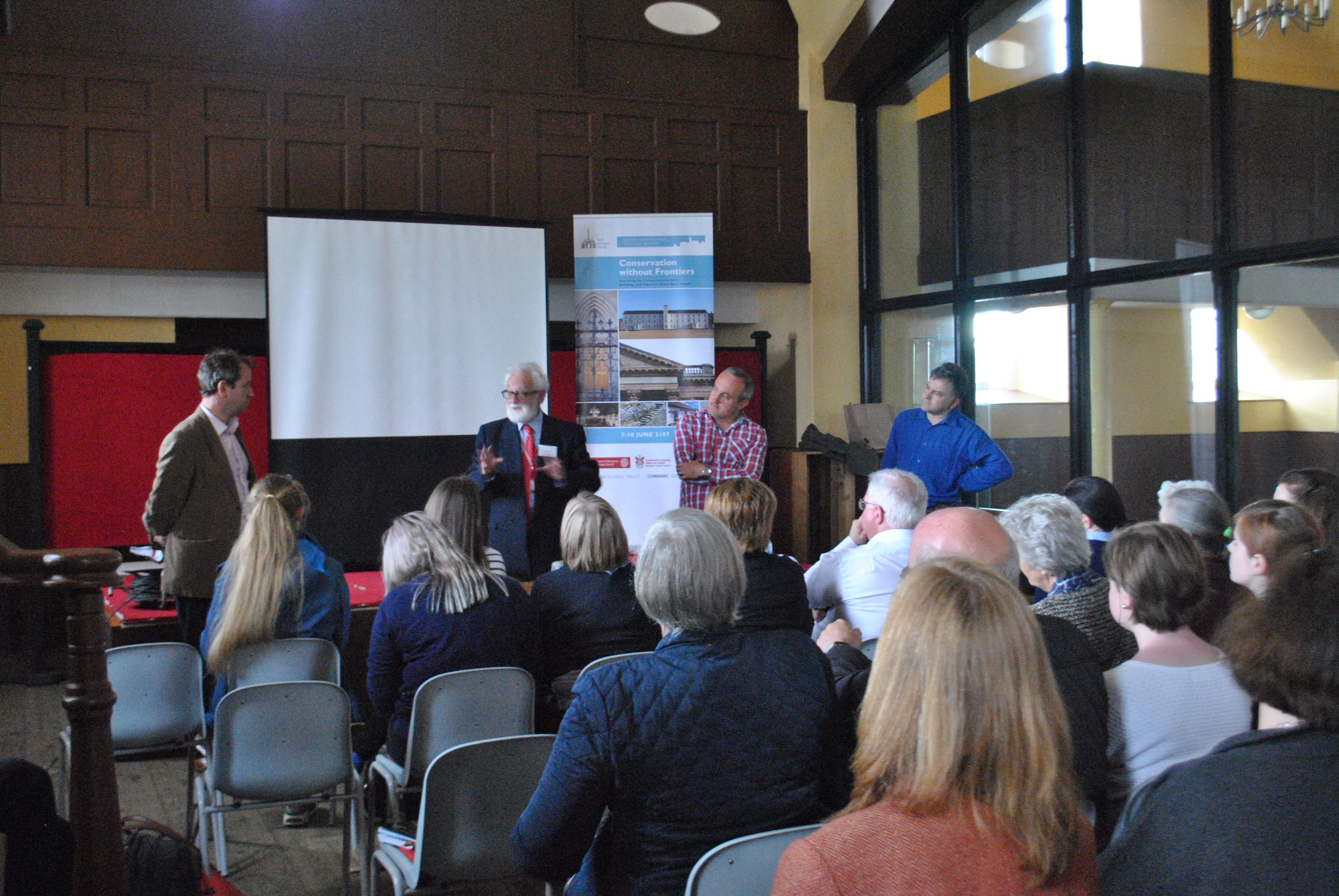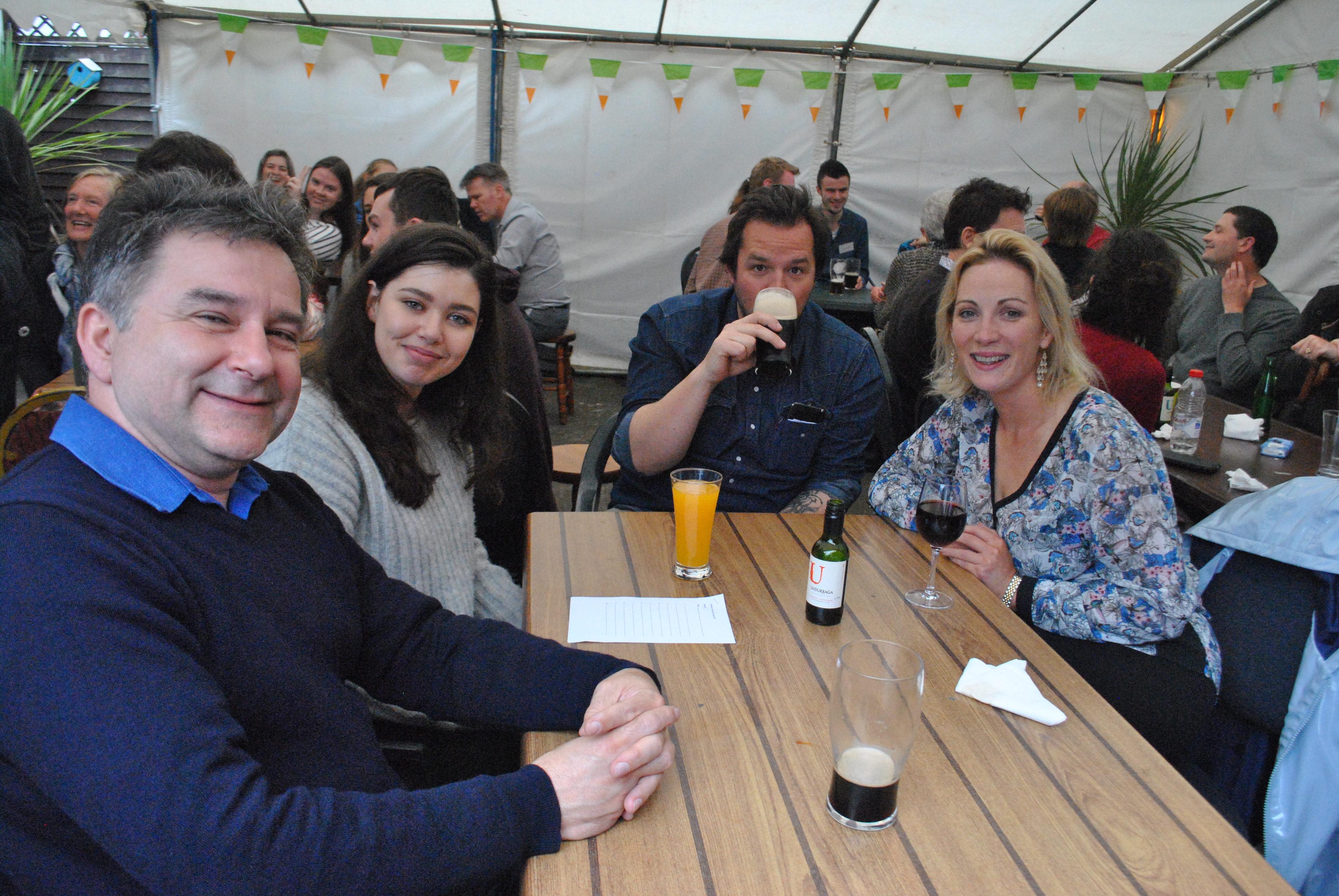Conservation without Frontiers Summer School 2017: A Student’s Experience #2
22.06.2017
Posted by IGS
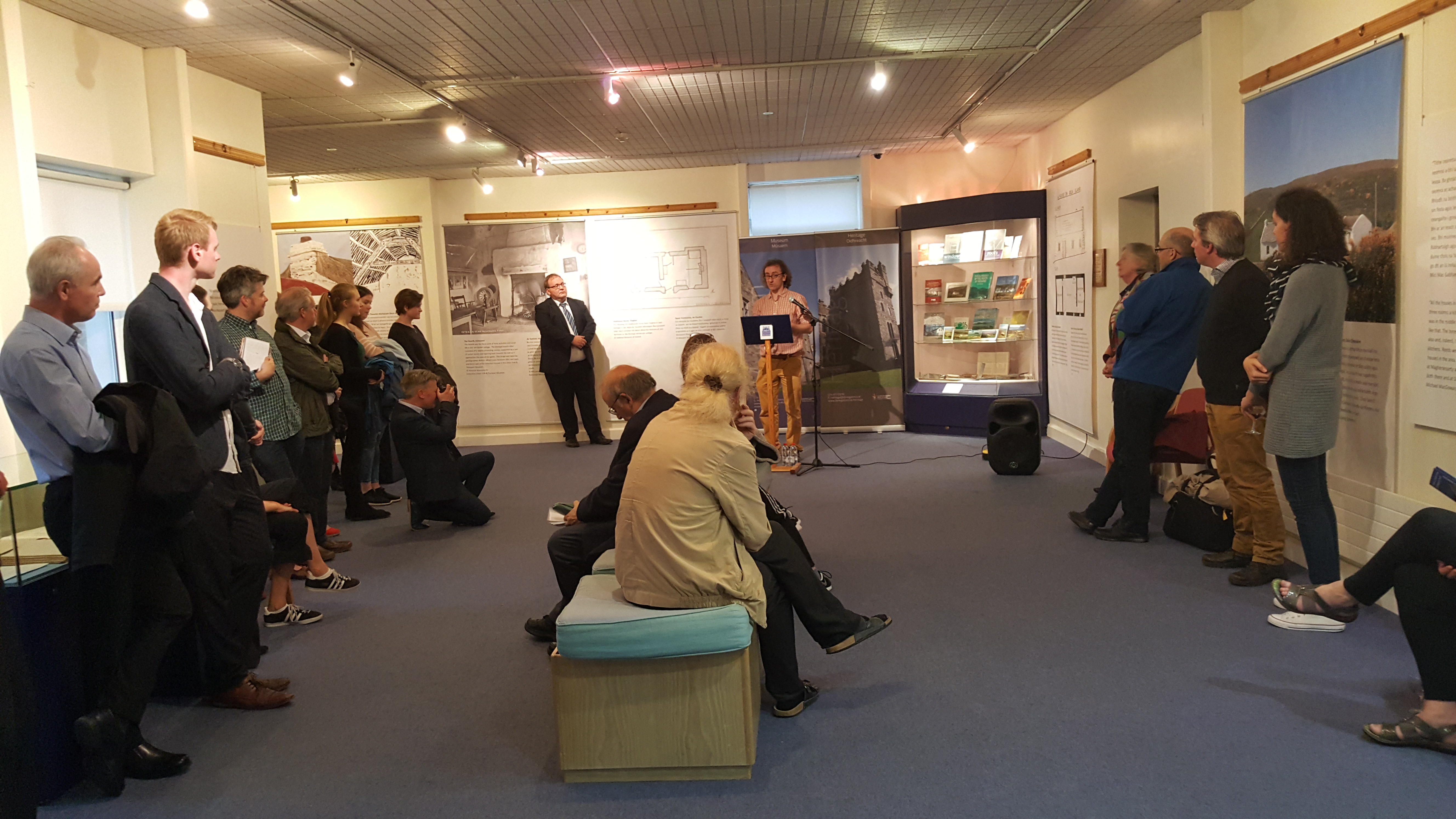
Launch of Donegal Vernacular Cottages at Donegal County Museum
Wednesday 7th June
They say don't judge on first impressions but Barry O’Reilly embodies the quintessential characteristics of a university professor. On the first evening of the summer school, the lecture from Barry on The Vernacular Donegal cottage was impressive as a demonstration of his use of GIS, in which he was self-taught. The natural groupings of the vernacular cottages in row arrangements all along the Atlantic seaboard was fascinating.
The subsequent exhibition opening took place at the Donegal County Museum. As an MA student in Cultural Heritage and Museum Studies at Ulster, any chance to view an exhibition is just my thing. To see reference to Estyn Evans was extra special, as I am using his work in my dissertation. The quality of food served in the museum (and there was wine) set the tone for the entire weekend.
Thursday 8th June -Derry
The next morning was spent in the Guildhall in Derry – a beautifully maintained structure. The main hall was the setting for a series of talks. From this, the importance of heritage in tourism particularly resonated with me. The love and enthusiasm of each speaker for their projects and architecture was very evident. From Ronan O’Donnell’s revival of traditional shop fronts in the Derry street scape and the respectful treatment of graffiti artists to same, to Kevin Pedersen’s outlining church renovation work carried out through his practice, I learned a lot.
The inimitable Primrose Wilson was doing her utmost best to ensure that everyone ran to time was only hindered by the odd minor technical hitch which was quickly remedied by Nikki McVeigh, UAHS. The afternoon weather predictions had threatened heavy rain but in typically optimistic Irish fashion we embarked on a series of guided tours. On our tour we were treated to the charming company of Daniel Calley, author of An Historical Gazetteer to the Buildings of Londonderry who came complete with dickie bow and a soft Virginian (USA, as opposed to Cavan) accent. Even the hardiest amongst us were inconvenienced by the deluge of rain. We were saturated with rain water but enthralled by Dan’s knowledge of the city, names of architects, architectural styles, use of buildings and general historical knowledge of the city. I would have happily followed Dan around the city all afternoon but we were already half an hour behind schedule.
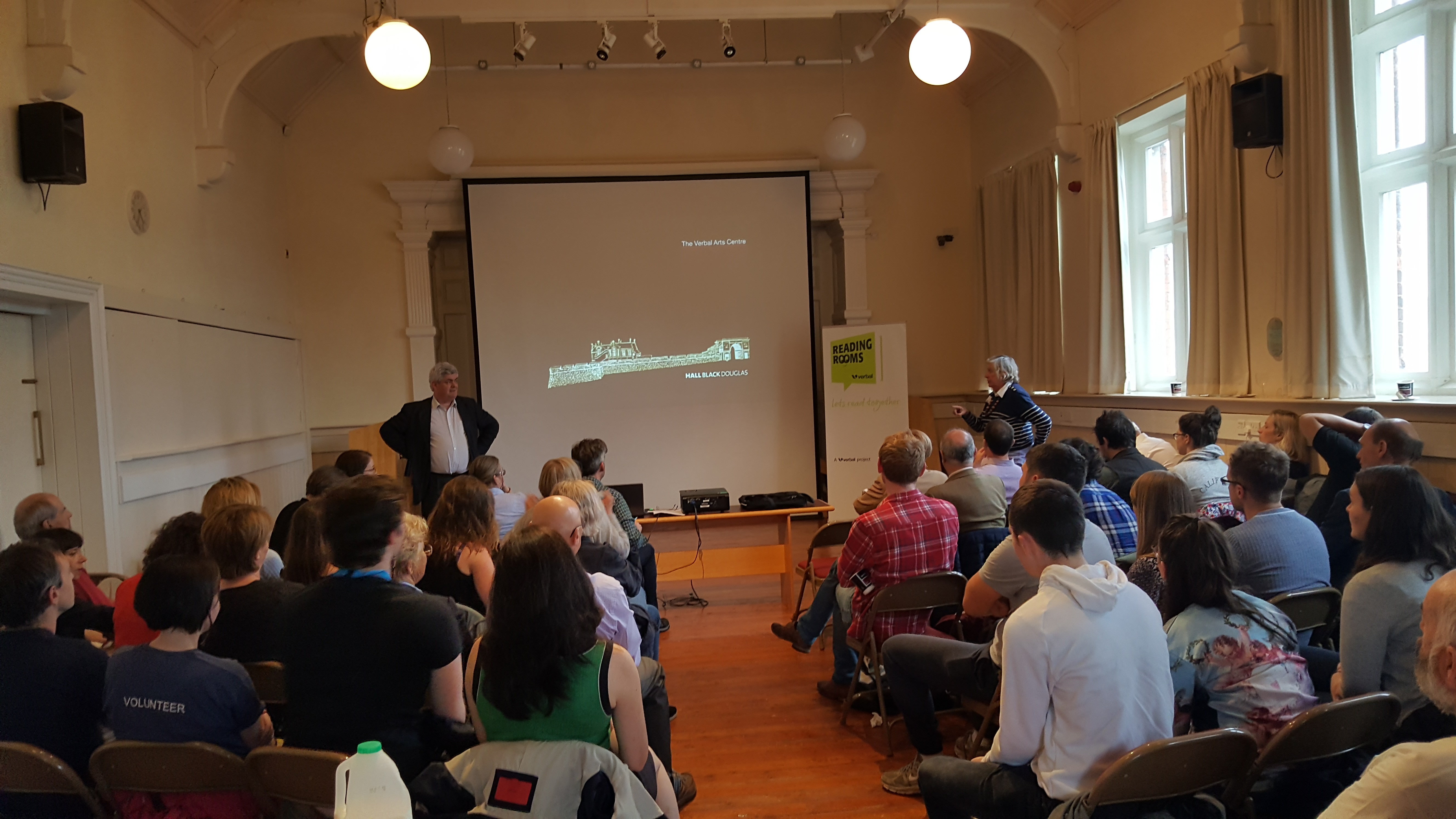
This first afternoon continued with hearing about the successes of the Verbal Arts Centre in the building itself. A further walking tour of Ebrington Barracks preceded dinner at the Glassworks. It was wonderful to see such as lovely old building as this filled with tables of eager diners, listening attentively to Yama Gill’s presentation on heritage regeneration in Havana, Cuba. The sunshine and vibrant colours in her photographs were in sharp contrast to the array of jumpers drying on the radiators around the room. The fabulous food served by Brown’s, Derry was accompanied by a medicinal glass of red.
Exhausted yet contented after a very productive day out, we returned to Letterkenny on the bus.
Friday 9th Donegal
The weather on the second full day was the antithesis of the previous day. Blue sky and warm sunshine was in plentiful supply. We opted for the Fanad lighthouse tour and set off to be treated to a thatching demonstration. The bunches of flax and the quick purposeful movements of the thatcher underpinned the joy of standing in a field in Donegal on a Friday morning, meaning there was nothing more pressing to be doing. All onlookers were enthralled. From this we travelled onwards to another gem, a privately owned rentable thatched cottage, to which we all swore to come back some day. We viewed many little gems of the vernacular thatched cottage along the route, with expert guidance provided from either Joe or Greg. At Fanad lighthouse the scene was idyllic. The beach and the sea glistened in the sunshine. And on climbing tower, we heard of family connections, the difficulty of life of a lighthouse keeper, the colour coding of lighthouse exterior, the scientific calculations in the coloured glass, and the history of those who had perished here. I was equally struck by the pristine presentation of the lighthouse still, and pride of the team there.
The missed picnic was a minor inconvenience, as was the impromptu walk down a country lane. Everyone so relaxed that no-one really minded this slight deviation from the schedule.
David Fleming (IGS), Dr Edward McParland (Irish Landmark Trust), Greg Stevenson (Under The Thatch) and Duncan McLaren (Daedlus Architecture) at the Meeting Hall, Ramelton
At Ramelton meeting house we were treated to the best brownies ever, and piping hot coffee served by the most over qualified team of waiters and waitress ever known. On this occasion we heard three speakers and in my memory the work of the Irish Landmark Trust and the impressive renovation strategies in evidence with Under The Thatch stood out as examples of organisations working persistently to preserve some of our valuable architectural heritage.
The evening continued in Ramelton with an opportunity to dander around the village, scoff pizza from trailer with the wood fired oven, enjoying well deserved drinks, and try to participate in the table quiz. The Architecture round was a bit of a challenge for the Museum Studies students, but the light-hearted banter between Kevin Mulligan, our quizmaster and the teams around the floor distracted us from our want of knowledge. What is a puffinus puffinus anyway?
Another busy day led to a Cinderella evening for me. However, those with greater stamina enjoyed the treats of Letterkenny into the wee hours.
Saturday 10th – Final Day
As thoughts began to return to home and the magic bubble of the summer school was about to burst, we were treated to Holy Hill House. This impressively maintained plantation house, privately owned by Mr & Mrs Hamilton was a gem. In the basement we were treated to map chests, apothecary sets, china, paintings, magazine collections and the list continued. As a museum professional in training, I marvelled at the items in their possession, and immediately wanted to volunteer to catalogue them all. Once again the heat of the sunshine on the front lawn gave us all an opportunity to conduct nuggets of conversation. I enjoyed speaking with Manus Derry from HED about grant aiding the preservation of the site and EHOD access to Holy Hill.
As our final stop we adjourned to Sion Stables, where we heard from Karen Latimer of Hearth on the trials and tribulations that led to the success of this project. While listening to Karen to speak I thought how much she embodied the qualities of persistence and dedication that are essential to ensuring the protection of the precious built heritage of our communities. The icing on the cake of the weekend, so to speak, was winning first prize in the student design competition for my proposal for Church Lane, Letterkenny. The cultural heritage of the area is so rich and the work of the Church Lane group and the county council in terms of development plans for the area made my task so much easier.
The weekend reinvigorated my love of all aspects of our unique built heritage and I will never again look at a thatched cottage in the same naïve way. I gained a wealth of knowledge, experiences and contacts. Thank you to all involved in the organisation of this wonderful programme. I look forward to enrolling in the next Summer School when it comes around.
Emma McGarrity (University of Ulster)
The 2017 CWF Summer School was made possible through the support of Donegal County Council, Derry & Strabane Council, The Heritage Council, the Department of Culture, Heritage and the Gaeltacht, The British Council, Consarc Conservation and the Esme Mitchell Trust.
